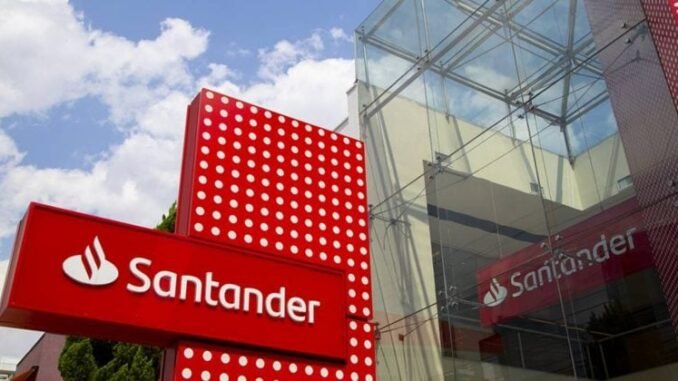
Key Takeaways
Banco Santander SA is exploring entering the stablecoin market and offering retail crypto services through its digital banking unit Openbank.
Santander’s plans include considering euro and dollar denominated stablecoins, with potential launches dependent on obtaining regulatory approvals.
Share this article
Banco Santander SA, which has recently surpassed UBS to become continental Europe’s largest bank by market capitalization, is in the early stages of exploring a stablecoin launch and expanding retail crypto offerings through its digital banking unit, Bloomberg reported Thursday.
The Santander-backed stablecoin initiative could take the form of either a proprietary token issued by the bank or a platform facilitating access to existing stablecoins. It is expected to be pegged to either the euro or the US dollar.
In Latin American countries grappling with economic volatility, dollar-based stablecoins like USDT and USDC are gaining traction as a hedge against weakening local currencies.
Nations like Argentina, Brazil, and Mexico, where Santander holds a large customer base, are at the forefront of this trend, driven by inflation, devaluation, and the need for efficient remittances.
For retail services, Santander is exploring the rollout through Openbank, its digital banking subsidiary. Openbank has applied for licenses under the EU’s Markets in Crypto-Assets Regulation (MiCA) framework to provide crypto trading services to retail clients.
If approved, the platform could launch as early as this year in markets such as Spain, Germany, Portugal, and the Netherlands.
Santander has demonstrated a strong interest in blockchain technology since the early stages of blockchain development, and that interest has only grown over time. The bank’s venture arm has previously invested in pioneering blockchain startups, including Ripple and Digital Asset Holdings.
Santander was also the first UK bank to utilize blockchain for international retail payments, launching a Ripple-enabled app in 2019 that enabled same-day cross-border transfers for customers in multiple countries.
Most recently, Santander Corporate & Investment Banking (CIB) executed its first EUR intraday repo and a USD term repo on the Digital Financing Application via Kinexys Digital Assets, JPMorgan’s digital asset platform for tokenized financial products.
The move reflects increased momentum among banks to develop regulated stablecoin products, amid legislative progress in both the EU and the US, and a stablecoin market recently exceeding $250 billion, per CoinGecko.
European banks have stepped up digital asset activity since MiCA regulations took effect. Santander’s rival, BBVA, received approval in March to offer retail crypto services in Spain, expanding on its existing operations in Switzerland and Turkey.
Other institutions are also advancing. Société Générale’s crypto unit SG Forge plans to launch a US dollar-backed stablecoin on Ethereum, aiming to become the first global bank to issue a stablecoin on a public blockchain.
Meanwhile, Deutsche Bank’s DWS Group, Flow Traders, and Galaxy Digital have also teamed up to issue a euro-denominated stablecoin.
Share this article

